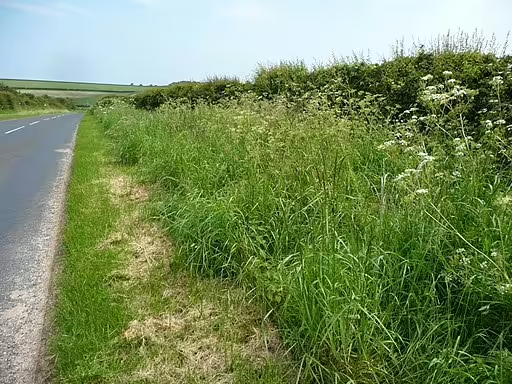Table of Contents for Smooth Blackhaw (Viburnum prunifolium)
Smooth Blackhaw (Viburnum prunifolium) is a shrub that is native to the mid-western and eastern United States. This species is a host to the holly blue (Celastrina argiolus), Spring Azure (Celastrina ladon), Henry’s elfin (Incisalia henrici) and the baltimore checkerspot (Euphydryas phaeton). Growing from 7 feet to 30 feet tall, this species grows on rocky hillsides, floodplains, roadsides, upland woods, thickets, glades, and fencerows. The white flowers bloom from May to June and the plant is hardy in zones 3-9.
Taxonomy and Naming of Smooth Blackhaw (Viburnum prunifolium)

collected in United States of America by The New York Botanical Garden (licensed under CC BY 4.0)
Taxonomy
Smooth Blackhaw (Viburnum prunifolium) was originally named and described by Carl Linnaeus, in Species Plantarum in 1753. It has kept this same name since and is a member of the Muskroot Family (Adoxaceae).
Meaning of the Scientific and Common Names
Scientific Name
The genus name, Viburnum, derives from the Latin word for obscure or wayfaringtree. The species name, prunifolium, is a Latin for leaves like Prunus (a cherry).
Common Name and Alternative Names
The common name comes from the resemblance of the plant to a hawthorn (Missouri Botanical Garden) and black color of the drupe (fruit) or stem. Other common names include sweet haw, sheepberry, nanny-berry, and stagbush (Dietrich, et al 1999).
Physical Description

- Plant Type: This plant is a shrub.
- Height: 7 ft (2.1 m) to 30 ft (9.1 m)
- Stem: The stems are erect with black, brown to gray bark.
- Leaves: The leaves are simple, opposite, obovate to ovate, and have entire to serrate margins. They are 1 in (2.5 cm) to 3 in (7.6 cm) long and 2 in (5 cm) to 4 in (10 cm) wide.
- Flower color: white
- Blooming period: This plant blooms from May to June.
- Fruiting type and period: This plant has drupes that start out green to pink and mature to bluish-black (Flemer 1984) that mature in the summer to fall.
Range of Smooth Blackhaw in the United States and Canada

This Viburnum is native to the mid-western and eastern United States. It is considered to be rare in the states of Connecticut, Iowa, Michigan, and Wisconsin.
Habitat

This species grows on rocky hillsides, floodplains (Gaddy 2008), roadsides, upland woods, fencerows, and disturbed habtitats (Clark and Bauer 2001), dry woods and damp thickets (Fernald 1936), limestone glades (Illinois Wildflowers), and wooded borders.
Hosted Insects

This viburnum is a host to the holly blue (Celastrina argiolus), spring azure (Celastrina ladon), Henry’s elfin (Incisalia henrici), the Baltimore checkerspot (Euphydryas phaeton), and the scarce fritillary (Euphydryas maturna).
Other Supported Wildlife

This species is a nectar source to other butterflies, skippers, bees, and wasps during the growing season. This species hosts a group of treehoppers (Enchenopa binotata) (Dietrich, et al 1999) and a mining bee (Andrena pruni) (Robertson 1891).
Frequently Asked Questions
Does this plant have any ethnobotanical uses?
The Native American Ethnobotany Database shows that this species has been used for a number of pharmaceutical uses including oral diseases, reproductive aids, a tonic, and for convulsions. The bark of the root has been used as a uterine sedative (Bausor 1937). The fruits are also edible.
How is this plant distinguished from other Viburnums?
This species is most similar to the rusty blackhaw (Viburnum rufidulum), but differs in that the rusty blackhaw has coriaceous (leathery) leaves with a reddish hue to them, and this species has herbaceous leaves that are green (Weakley 2022).
Is this plant invasive?
This species has not been noted as being weedy.
Gardening with Smooth Blackhaw

Hardiness
This species is hardy in zones 3-9. If your garden is within these zones and you have the right growing conditions (soil, moisture and exposure), you may well be able to grow this plant. However, if planted outside of its range, the hosted species may not recognize the plant or be harmed by ingesting a different species with an unfamiliar chemical composition.
Optimal Conditions
This species requires full sun to part-shade and dry to moist well-drained soils. This plant can handle poor soils, which makes it versatile in most planting situations.
Other Things of Note
This shrub is treasured in the nursery industry for its autumn foliage. This species is recommended as a screening tree (Wyman 1965).
References
- Bausor, S.C. 1937. A review of some medicinal plants, Part 1. Torreya 37 (2): 25-32.
- Clark, Ross C. and Ryan M. Bauer. 2001. Woody Plants of Six Northern Kentucky Counties. Journal of the Kentucky Academy of Science 62: 39-51.
- Dietrich, Christopher H., M.J. Rothschild, and Lewis L. Dietz. 1999. Checklist and Host Plants of the Treehoppers (Hemiptera: Membracidae) of North Carolina. Proceedings of the Entomological Society of Washington 101: 242-262.
- Fernald, Merritt Lyndon. 1936. Plants from the Outer Coastal Plain of Virginia (continued). Rhodora 38: 414-452.
- Flemer, William. 1984. Island and Median-Strip Planting. Arnoldia 44: 14-28.
- Gaddy, L.L. 2008. A New Sessile-Flowered Trillium (Liliaceae: Subgenus Phyllantherum) from South Carolina. Phytologia 90(3): 382-390.
- Robertson, Charles. 1891. Descriptions of New Species of North American Bees. Transactions of The American Entomological Society 18: 49-66.
- Weakley, A.S. and Southeastern Flora Team. 2022. Flora of the southeastern United States. University of North Carolina Herbarium, North Carolina Botanical Garden.
- Wyman, Donald. 1965. Plants for Screening Junkyards, Gravel Pits, and Dumps. Arnoldia 25 (8): 45-48.


